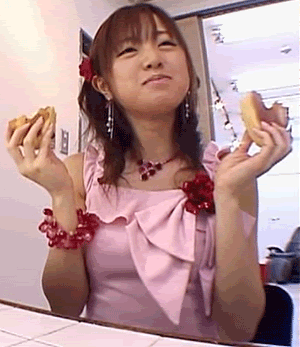Well, to the adventurous, read on, to those with an IQ of 80 and below, turn back now, you're gonna crash!
Koropokkur
Koropokkur are little people that appear in Ainu legends. The name in Ainu is generally understood to mean "The people under the butterbur leaves." P and b sounds are not differentiated in Ainu, hence they are also known as Korobokkur. Ainu legends of these little people are widely known in places such as Hokkaido, Minamichishima, and Karafuto. As well as Koropokkur/Korobokkur, there are also instances where they are called Tichiseunkur, Tichisekocchakamui and Tonchi (which all mean "Pit dwellers").
Legends
While Ainu legends of these little people are widely known in places such as Hokkaido, Minamichishima, and Karafuto, there are variations depending on the region. The following story is mostly the same in each version.
Before the Ainu started living on this land there was a race known as the Koropokkur living here. Small in stature, fleet of foot, they were skillful fishermen who lived in pits with roofs made from butterbur leaves.
They were benevolent and friendly with the Ainu, giving them game such as deer and fish and trading items with them. But they never wanted to show themselves and so they traded by leaving things at night in places such as windows.
One day, a young Ainu tried to see a Koropokkur by lying in wait for the little people to actually leave some gifts. Whilst a Koropokkur was leaving some gifts, the young Ainu grabbed the Koropokkur's hand and pulled it indoors. The young Ainu had pulled in what appeared to be a beautiful lady with tattoos on the back of her hands (It is said that Ainu wives having tattoos comes from this incident).
The Koropokkur went into a rage over the young Ainu's insolence, so from that day on, the Koropokkur were never seen by the Ainu ever again. To this day, there are still pits in many places and if you dig, stone implements and earthenware which are traces of them once living on this land.
Depending on the region, there are variations in the mythology such as; "The Koropokkur were a lazy people that the Ainu gave food to," or, "The Ainu custom of tattooing originally came from worrying that the Koropokkur would take back the land the Ainu had taken from them, so they put tattoos on the Koropokkur's hands."
(If you're wondering, "Wha? How does tattooing the little buggers help?" You've got me. This makes no sense to me or my wife (who's Japanese). She has a strong suspicion that this part of the Wiki was not written by a native Japanese, hence my having a hard time trying to make sense of it!)
The Koropokkur Debate
In 1886, Shozaburo Watase wrote in the inaugural issue of Anthropological Society Report that the ruins of pit dwellings that could be seen in the Sapporo area were made by the Koropokkur and that this was proof that the Koropokkur had been living there before the Ainu. Later, Shogoro Tsuboi wrote in issue 9 of Anthropological Society Report that he mostly agreed with Shozaburo Watase. However, Kotaro Shirai, in the same issue published his opposing theory anonymously. Yoshikiyo Koganei, Kosaku Hamada, Denzo Sato, Ryuuzou Torii, Sadakichi Kita and many other researchers got involved in the argument. Ultimately the debate continued until 1913, when Tsuboi died in St. Petersburg, Russia and the theory that the Koropokkur really existed went into decline.
However, the debate not only changed the course of Ainu research by popularising the theory that the Ainu are the indigenous people of northern Japan (The Ainu theory) over the theory that they are not (The pre-Ainu theory), but also widely caused great leaps forward in Japanese anthropology, folk studies and archaeology.
Koropokkur-Themed Works
In 1959, Satoru Sato had a novel about the Koropokkur published called The Little Country Nobody Knows which formed the currently accepted view of the Koropokkur. This book became part of the Korobokkur Tales series. Sequels included The Dog As Small As A Bean, The Little Person Who Fell From The Stars, The Boy With The Strange Eyes and More Tales From The Little Country.
These books were turned into an anime series called Korobokkur Adventures in 1973.
In The Little Country Nobody Knows, Satoru Sato has his main character say that perhaps the Koropokkur and Sukunabikonanomikoto are of the same race.
The Koropokkur also appear in the Bokujo Monogatari (Harvest Moon) video game series to help with farming chores and give advice to the main character.

1 comment:
I don't know how old this post is, but I want to tell you that it was helpful when I was looking for information on the koropokkur. I had no idea that the "Harvest Sprites" from Harvest Moon were really koropokkur, but it makes more sense that they'd be there now. Also the rest of the information is helpful. Thank you!
Post a Comment